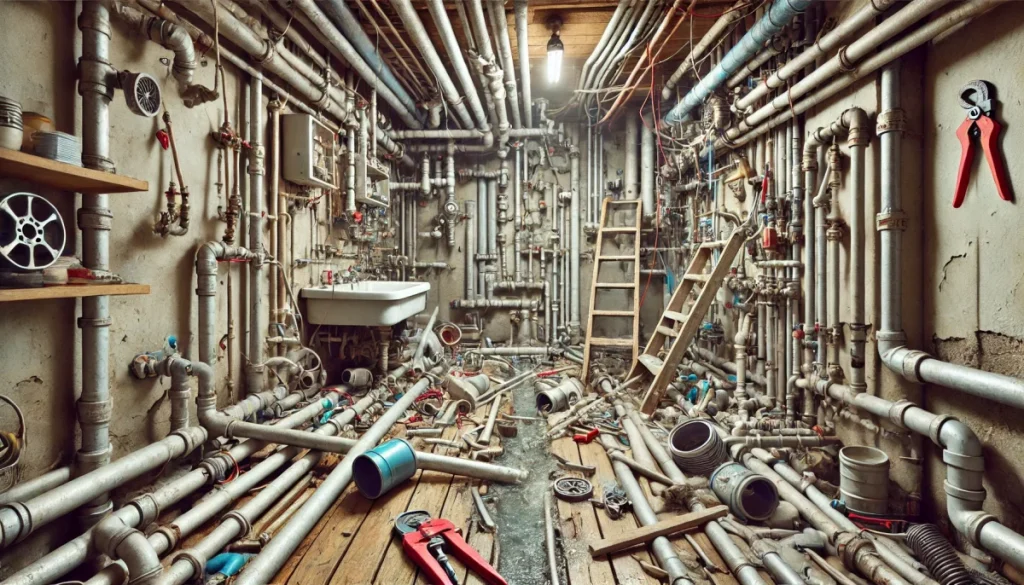The planning and design phase of gas line installation is a critical component that significantly influences the safety, efficiency, and longevity of the entire system. Inadequate attention to this crucial stage can lead to a myriad of issues, ranging from minor inefficiencies to catastrophic failures. This section will elucidate the importance of thorough planning and design, outline potential consequences of inadequate preparation, and provide comprehensive guidelines for ensuring a well-executed gas line installation project.
Importance of Comprehensive Planning
Comprehensive planning serves as the foundation for a successful gas line installation. It encompasses several key aspects:
- Site Assessment: A thorough evaluation of the installation site is paramount. This includes analyzing soil conditions, identifying potential obstacles, and assessing environmental factors that may impact the installation process or the long-term integrity of the gas line.
- Load Calculation: Accurate determination of the gas load requirements is essential for proper system sizing. This involves considering both current needs and potential future expansions to ensure the system can accommodate long-term demands.
- Regulatory Compliance: Adherence to local, state, and federal regulations is non-negotiable. Proper planning involves a comprehensive review of all applicable codes and standards to ensure full compliance throughout the installation process.
- Safety Considerations: Identifying potential safety hazards and implementing appropriate mitigation strategies is a critical aspect of the planning phase. This includes considerations for both the installation process and the ongoing operation of the gas line.
Consequences of Inadequate Planning and Design
Failure to adequately plan and design a gas line installation can result in severe consequences:
- Safety Hazards: Improper planning can lead to gas leaks, explosions, or other safety incidents that put lives at risk.
- Inefficient System Performance: Inadequate sizing or poor layout can result in pressure drops, insufficient gas flow, or other performance issues that compromise the functionality of gas-powered appliances.
- Increased Costs: Errors in planning often lead to change orders, rework, or the need for premature system upgrades, all of which can significantly increase project costs.
- Regulatory Non-Compliance: Failure to adhere to relevant codes and standards can result in fines, legal liabilities, and potential shutdown of the gas system.
- Environmental Impact: Poor planning may lead to unnecessary disruption of the surrounding environment or increase the risk of gas leaks that can harm local ecosystems.
Guidelines for Effective Planning and Design
To mitigate the risks associated with inadequate planning and design, the following guidelines should be meticulously observed:
- Engage Qualified Professionals: Utilize the expertise of certified engineers and designers who specialize in gas line installations. Their knowledge and experience are invaluable in navigating the complexities of system design and regulatory compliance.
- Conduct Comprehensive Site Surveys: Perform detailed site assessments, including geological surveys, utility mapping, and environmental impact studies. This information is crucial for identifying potential challenges and optimizing the gas line route.
- Implement Rigorous Load Calculations: Employ advanced modeling techniques to accurately determine gas load requirements. Consider factors such as peak demand, diversity factors, and potential future expansions to ensure the system is properly sized.
- Prioritize Safety in Design: Incorporate safety features such as emergency shut-off valves, cathodic protection systems, and leak detection technologies. Design the system with maintenance and inspection accessibility in mind.
- Utilize Advanced Design Tools: Leverage computer-aided design (CAD) software and building information modeling (BIM) to create detailed, accurate plans that facilitate coordination between different trades and stakeholders.
- Conduct Thorough Design Reviews: Implement a multi-stage review process involving all relevant stakeholders, including engineers, contractors, and regulatory authorities. This helps identify potential issues early in the process when changes are less costly to implement.
- Develop Detailed Documentation: Create comprehensive design documents, including specifications, drawings, and installation procedures. Clear, detailed documentation is essential for effective communication and quality control during the installation phase.
- Plan for Future Expansion: Design the system with modularity and scalability in mind, allowing for easier future expansions or modifications as needs change over time.
In conclusion, the planning and design phase of gas line installation is a complex and critical process that demands meticulous attention to detail and a comprehensive approach. By prioritizing thorough planning and engaging qualified professionals, project stakeholders can significantly reduce risks, enhance system performance, and ensure long-term safety and efficiency. The investment in proper planning and design pays dividends throughout the lifecycle of the gas line system, making it an indispensable component of any successful installation project.



